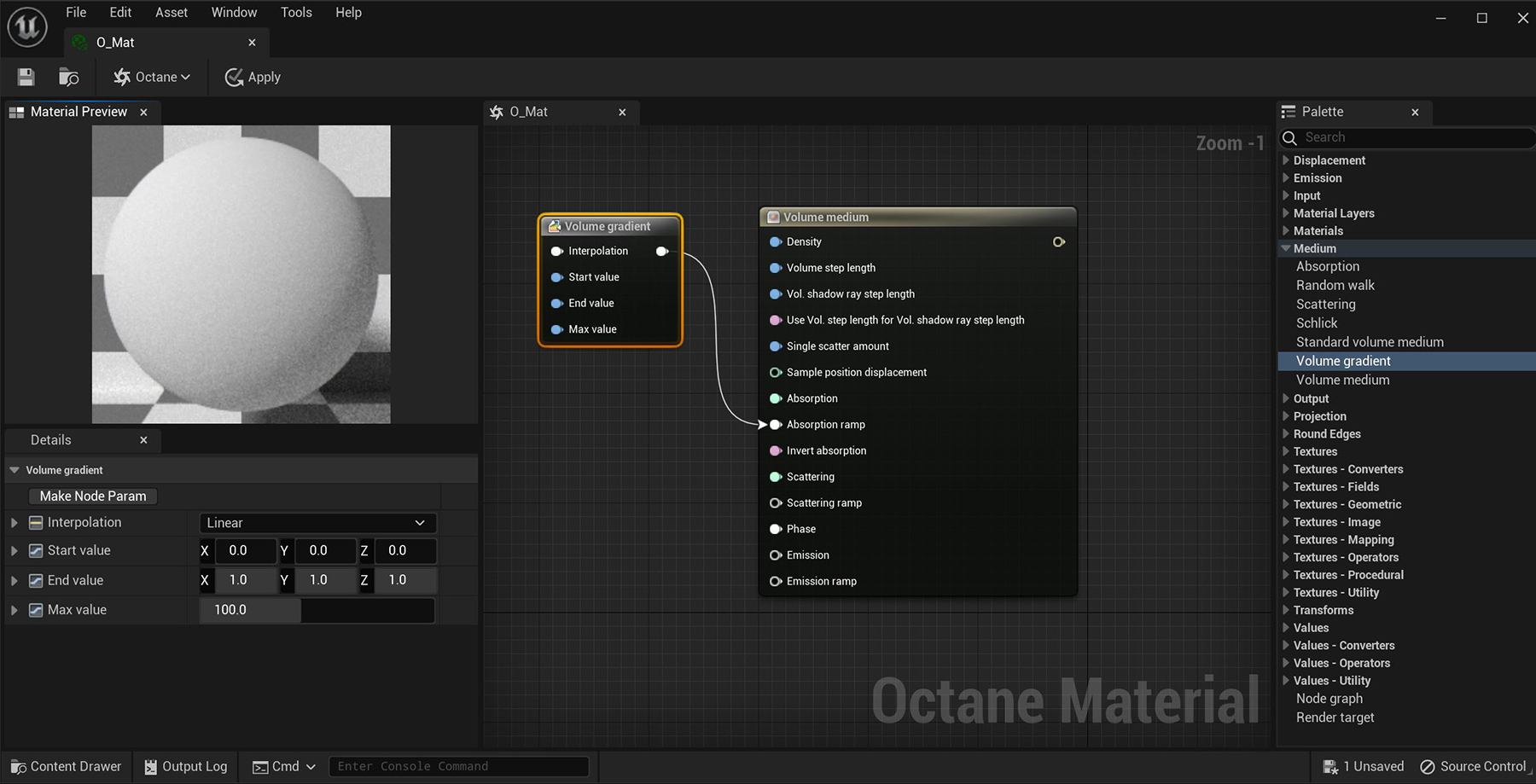
The Volume gradient node is designed for use on volumetric surfaces such as smoke and clouds, and require a VDBDreamworks’ open-source C++ library housing the data structures and tools implementation for storing and manipulating volume data, like smoke and other amorphous materials. The purpose of OpenVDB is mostly to have an efficient way to store volumetric data in memory and on disk. It has evolved into a more general toolkit that also lets you accomplish other things, such as fracturing volumes, converting meshes to volumes and vice versa. However, it does not include a computational fluid dynamics solver, and therefore it cannot procedurally generate smoke or fire. OpenVDB is fully integrated as a library in OctaneRender. For more information about OpenVDB, please see http://www.openvdb.org/. file to create the Volume objects. VDB files are not supported natively by the Unreal® Engine, but you can import them as part of an ORBXThe ORBX file format is the best way to transfer scene files from 3D Authoring software programs that use the Octane Plug-in such as Octane for Maya, Octane for Cinema 4D, or OctaneRender Standalone. This format is more efficient than FBX when working with Octane specific data as it provides a flexible, application independent format. ORBX is a container format that includes all animation data, models, textures etc. that is needed to transfer an Octane scene from one application to another.® package. Volume Gradient nodes are often connected to the AbsorptionDefines how fast light is absorbed while passing through a medium. ramp or ScatteringDefines how fast light gets scattered when traveling through the medium. ramp inputs on a Volume medium node. More information on this is available at http://www.openvdb.org/.

Figure 1: The Volume Gradient node connected to a Volume medium node